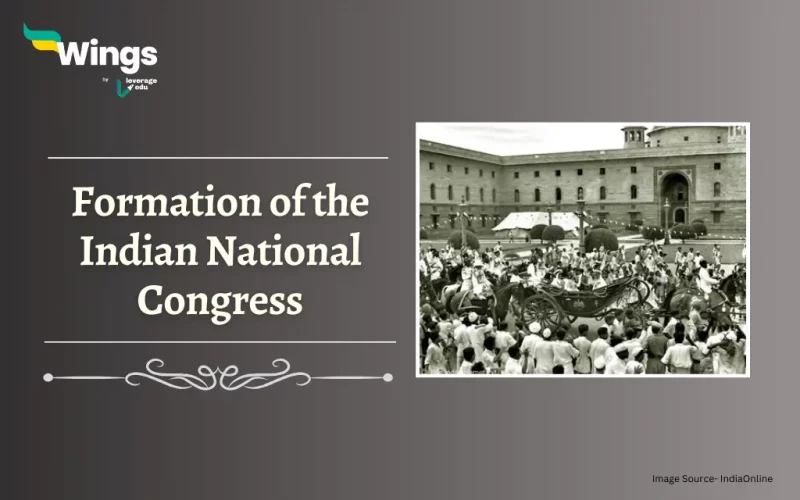We see political parties in a very different context today, however, at the time of independence the formation of the Indian National Congress was the biggest hope for Indians. It was the major party in India at that time and remained dominantly influential for decades after independence. This party was the spearhead of many movements in India’s independence struggle. Here are some facts about the history and formation of the Indian National Congress.

Also Read: Lord Amherst: The 1st Earl and Governor General of India
Reasons For the Formation of the Indian National Congress
There were reasons that demonstrated a need for India to have its representatives. As a result, a British officer Allan Octavian Hume formed the Indian National Congress. We have mentioned some of the most pressing reasons over here.
- After the Indian mutiny of 1857, the British government wanted a safety valve between itself and the Indians. This was to mediate discussions between the two parties without the involvement of violence as the first resort. Many Indian and British soldiers were dead in the Revolt of 1857, and even though they curbed it, the British were wary of such revolts.
- The party was also established as an organisation to articulate the demands of Indians. A group of learned Indians who could represent the Indian political and economic concerns at a national level.
- Several Indian leaders like Lala Lajpat Rai believed and supported the ideology of the safety valve theory. This not only bagged support of the strong people but also great influencers who could make people listen.

Origin of Safety Valve Theory
The concept originated in the mind of Allan Hume during the formation of INC. Because of the prevalent political climate in India, the authorities of the British government were concerned with the uprisings of leaders and rebellions in various parts of India by some educated Indians, thus curbing the situation and giving it a more peaceful look, the government agreed to create a platform.
Safety Valve theory was used by Hume to establish a political platform for Indians, where, they could advocate for their rights and discuss their political concerns. This platform can serve as the stage for people to express their grievances and concerns. It allowed young leaders to join and discuss the issues giving a united front from any background. The concept indirectly helped the British government to redirect the prevailing dissent among revolutionaries into a more peaceful channel.
Many see the establishment of INC by this theory as progressive, since it allowed for the mobilization and organization of Indians in such a political crisis.
Also Read: Constitutional Development of India (1946 – 1950)
Formation of the Indian National Congress
Allan Octavian Hume invited the Indian leaders and the then viceroy of India Lord Dufferin to Bombay in 1885 to form a national-level organisation. This organisation was to help more Indians participate and help the British in the governance of India. Here are some important details about the formation of INC in 1885.
- The party was joined by 72 delegates from all provinces and presidencies of British India.
- From 28th December 1885 to 30th December 1885 the role of the organisation and its powers were discussed in Bombay.
- Some notable people to join the INC were Dadabhai Naoroji, Dinshaw Edulji Wacha, Surendranath Banerjee, Badruddin Tyabji, Pherozeshah Mehta W. C. Bonnerjee, S. Ramaswami Mudaliar, S. Subramania Iyer, and Romesh Chunder Dutt.
Also Read – Formation of Muslim League
Therefore, the Indian National Congress emerged as an organisation to support the British in Governance by leveraging support from the Indians. However, this group of learned and bright Indians soon saw the oppressive undertones of the favours offered by the British and became a strong force that steered India’s freedom struggle.
Relevant Blogs
| Indira Gandhi | Surat Split |
| Lucknow Pact | August Offer (1940) |
| The Government of India Act 1919 | Muhammad Ali Jinnah |
| Morley-Minto Reforms | Gandhi Irwin Pact (1931) |
| Two Nation Theory | Cabinet Mission 1946 |
This was all about the Formation of Indian National Congress. If you want to read more articles like this, you can get Study notes on the Modern History of India here. Also, you can visit our general knowledge page on Indian History!
 One app for all your study abroad needs
One app for all your study abroad needs













